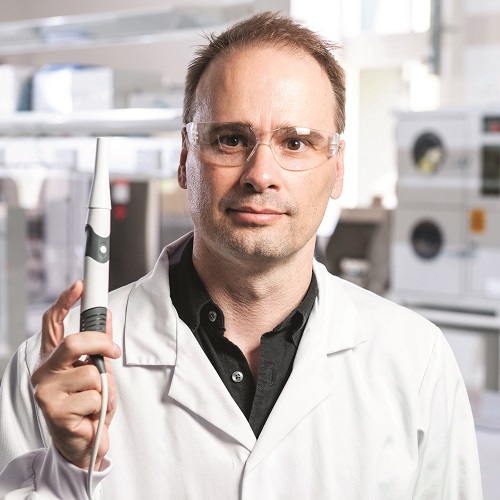
A simple finger prick being trialled by University of South Australia researchers could soon be all it takes to save the lives of pregnant mothers and their babies who are at risk of a dangerous pregnancy complication known as preeclampsia.
Preeclampsia affects four per cent of all pregnancies in Australia and can cause organ failure, blood clotting, restricted foetal growth and be life-threatening for the mum and baby.
However, current diagnosis methods are complex and can take up to 24 hours in rural areas - time that is critical when dealing with the health of an unborn baby.
In a move which could revolutionise the diagnosis and care of this devastating condition, scientists from UniSA's Future Industries Institute have developed new technology which requires only a few drops of blood to test for preeclampsia - and the result returned within 30 minutes.
This means the test can be done quickly and accurately in a rural setting by a primary healthcare team, without the need to send to an advanced laboratory.
The Hospital Research Foundation Group is now funding the testing stage of their device, in the hope that earlier and more accurate diagnosis can improve prenatal care and save lives.
Chief investigators Dr Duy Phu Tran and Professor Benjamin Thierry said the device would be most critical in regional settings where emergency care is limited, with preeclampsia one of the main reasons for emergency retrievals by the Royal Flying Doctors Service.
"Our technology is designed to enable rapid and accurate point-of-care testing for preeclampsia biomarkers, allowing for quicker interventions and likely improved pregnancy outcomes for women living in rural Australia," Dr Tran says.
"The current test for preeclampsia in primary care involves a combination of blood pressure measurements, urinalysis and/or biochemical and haematological testing. Blood biomarkers have recently been identified but testing can only be carried out in large laboratories, for example, at the Women's & Children's Hospital.
"At the same time, preeclampsia can progress very quickly - in some cases hours - and have catastrophic consequences. We hope our device can bridge this gap in care for rural women."
A $132,000 grant from The Hospital Research Foundation Group will help accelerate testing and commercialisation of the device through a trial of at-risk pregnant women in hospital.
If validated, the trial will then extend to mothers seen by the Royal Flying Doctors Service retrieval team, with the hope to then expand even wider with more funding.
The 3D printed device is being manufactured locally by the South Australian node of the Australian National Fabrication Facility at UniSA's Mawson Lakes campus.
Dr Fergus Gardiner, Director of the National Emergency Response and the Public Health Research Unit at the Royal Flying Doctors Service, said if the trial was successful, the technology would have a significant impact on prenatal care in regional areas.
"Preeclampsia is a substantial risk during pregnancy, which is exacerbated in remote communities, where diagnosis and subsequent treatment can take significantly longer than in major city areas," Dr Gardiner says.
"We conduct about 750 retrievals associated with pregnancy per year, with pre-term labour, premature rupture of membranes and preeclampsia being some of the leading transfer reasons.
"At the Royal Flying Doctor Service we see first-hand the impacts of poorly managed preeclampsia and this technology is an exciting and much-needed step forward in improving rural and remote patient outcomes and in closing the gap."
Paul Flynn, CEO of The Hospital Research Foundation Group, said the organisation was pleased to be advancing testing of the device.
"Women's health and bridging the gap between country and city care are important healthcare needs," Mr Flynn says.
"This revolutionary technology, if validated, will be an exciting development to give all mums and bubs the very best start in life."






